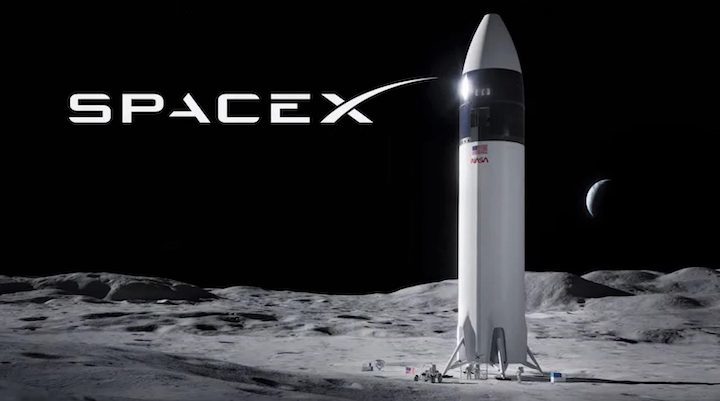17.08.2021

Nasa noted last week that lunar landing in late 2024 as initially planned is not feasible
SpaceX will likely be ready to shuttle humans to and from the moon before 2024, Elon Musk, the company's founder and CEO, has said.
NASA is working with Musk's private spaceflight company on a program, called Artemis, to take humans back to the moon, where no one has stood since 1972.
SpaceX is tasked with developing the first commercial landers, known as human landing systems (HLS), to be used in lunar missions, as part of a $2.89 billion deal.
The first will involve NASA's Space Launch System rocket launching four astronauts aboard the Orion spacecraft into lunar orbit. Two crew members will transfer to the SpaceX lander to journey to the surface of the moon, which they will explore for about a week.
The lander is then expected to carry them back to orbit, allowing them to return to Orion before heading back to Earth.
SpaceX's HLS Starship would remain in space, to be used for multiple trips between lunar orbit and the moon's surface. It is hoped a form of the landing system could be designed for travel to Mars, and other destinations.
Asked on Twitter, "Do you expect to have Lunar Starship ready to land humans in 2024 (despite other delays)?" Musk responded simply: "Probably sooner."
Musk's company was founded with an ethos of making life multi-planetary and in January 2020, Musk said he planned to send 1 million people to Mars by 2050.
The company hopes Starship—a name it also uses to refer to its rocket and spacecraft combination—will eventually be a fully reusable transport system capable of carrying up to 100 people at a time to the Red Planet.
The ambitious project has faced several setbacks with four prototypes taking off successfully but struggled with the touchdown maneuvers, ultimately destroying themselves.
However, in May there was a significant breakthrough when a prototype, Serial Number 15 (SN15), completed a successful high-altitude ascent and landing.
The latest SpaceX and NASA tie-up is not the first time the company and agency have worked together.
Musk's company is one of two private companies (the other being Boeing) to land a deal to carry the agency's astronauts to and from the International Space Station. SpaceX does so using its Crew Dragon spacecraft.
Jeff Bezos, another billionaire American heading his own space company, has been critical of NASA's decision to hand out contracts to SpaceX, rather than his Blue Origin project. Alabama-based Dynetics also missed out on the lunar lander deal.
Quelle: Newsweek

